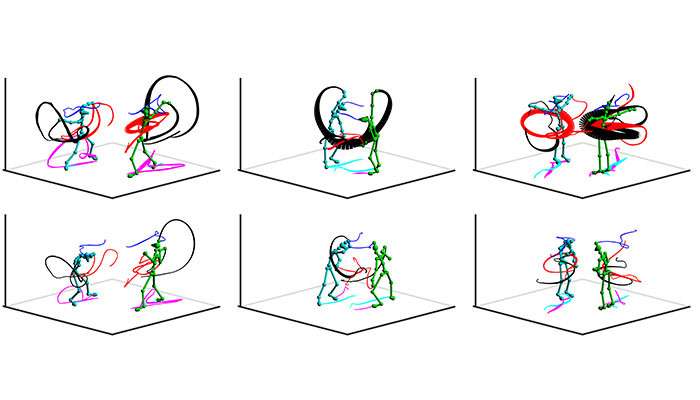Emotional expressions of love and loathing clearly differ in motions

How would we express emotions if we were limited to using only our bodily movements instead of facial expressions? What types of movements express pride or how do we signal sadness? How rapid is emotional contagion, and how quickly can emotions alter? In the Social eMotions project lead by Aalto University, which is just about to finish, emotional communication was studied using the means of contemporary dance and the science of movements.
'Our project combines artistic and scientific research in a novel way. Science excels in theory, quantification and reduction, whereas artists are driven by the phenomenon itself and its authenticity. By combining these different points of view, we can reach conclusions that are more appealing and useful to both science and art', explains Tommi Himberg, a post-doctoral researcher at the Aalto University Department of Neuroscience and Biomedical Engineering.
In the research project, two choreographer-dancers, Jarkko Lehmus and Johanna Nuutinen, studied the bodily expression of social emotions such as pride, shame, love, and loathing as well as the communication and contagion of these emotions through bodily contact between two dancers.
Eventually, the results of the artistic work were compared with those achieved in scientific studies, such as the bodily map of emotions compiled by Lauri Nummenmaa's group at Aalto University. The results complemented each other in a very interesting manner.
'The energy levels of a dancer are lower when he or she feels sad. Sadness also makes movement patterns heavier, collapses the posture and withers the limbs. Internally, sadness is felt as an increased pressure in the chest and head cavities. The respondents of Nummenmaa's study also reported that sadness numbs the body everywhere else, but it increases activation in the chest and head areas', describes Jarkko Lehmus, the artistic director of the project.
Lehmus and Nuutinen created a short, neutral choreography and performed it expressing different emotional states and processes in the motion capture studio of the Department of Computer Science. This allowed the researchers to obtain accurate 3-D models of the performances, and the measurements could be analysed to find out the differences in the movements of diverse emotional expressions.
'When a dancer expresses love, for example, the dance motions are more rapid and accelerated than the movements expressing loathing', reports Dr Klaus Förger, an alumnus of the Department of Computer Science, responsible for the motion analysis in the project.
Audience as the emotion researchers of a dance piece
The Social eMotions research project culminates in an interactive dance performance which brings two dancers, two cellists and one researcher on stage. The audience votes for the emotional content of the piece via an audience response system for mobile phones during the performance.
'This allows the audience to take the role of an emotion researcher, and witness first-hand how different combinations of emotions change the movements, the music and the interaction of the performers, as well', exalts Johanna Nuutinen, whose solo piece called Hatched makes up the other half of the double bill.


















